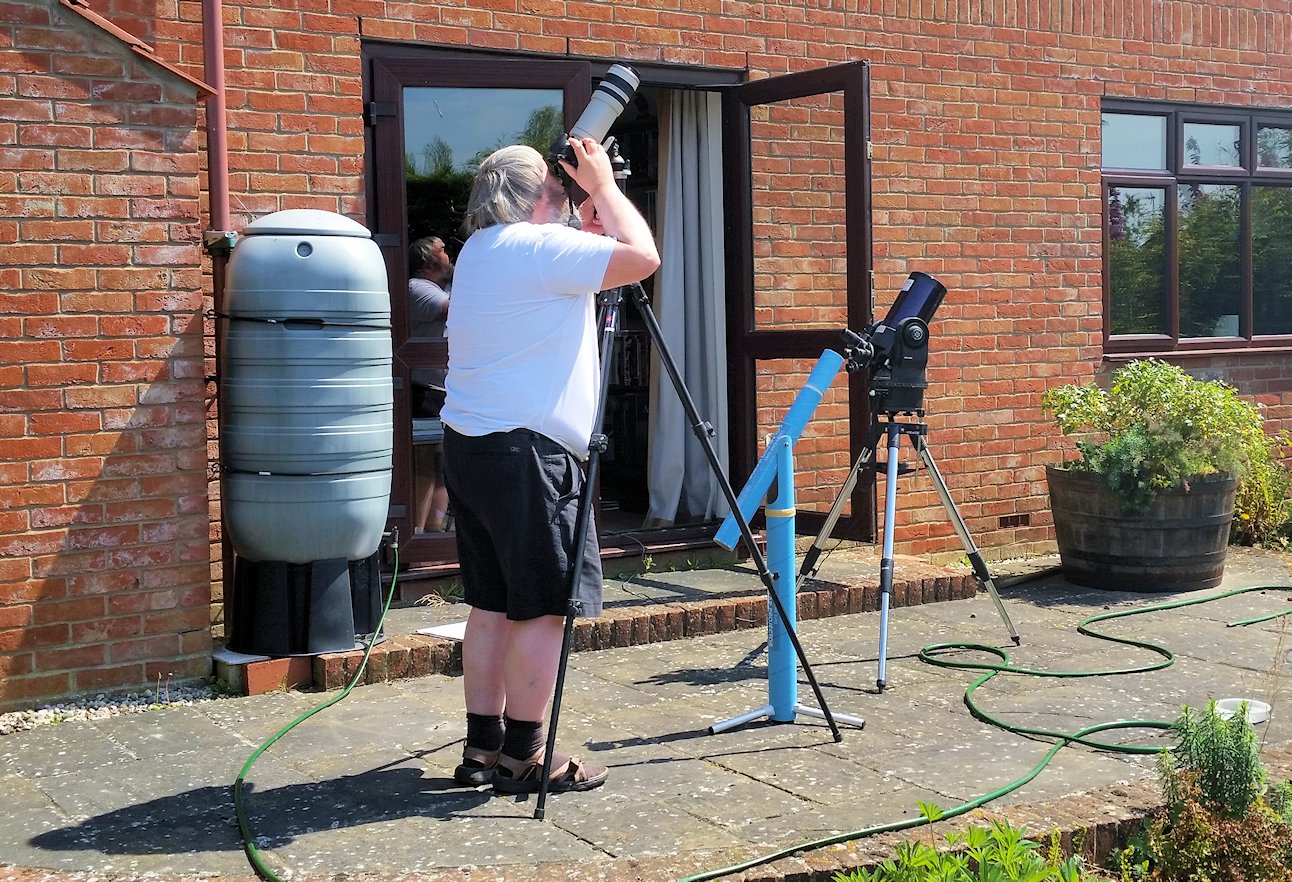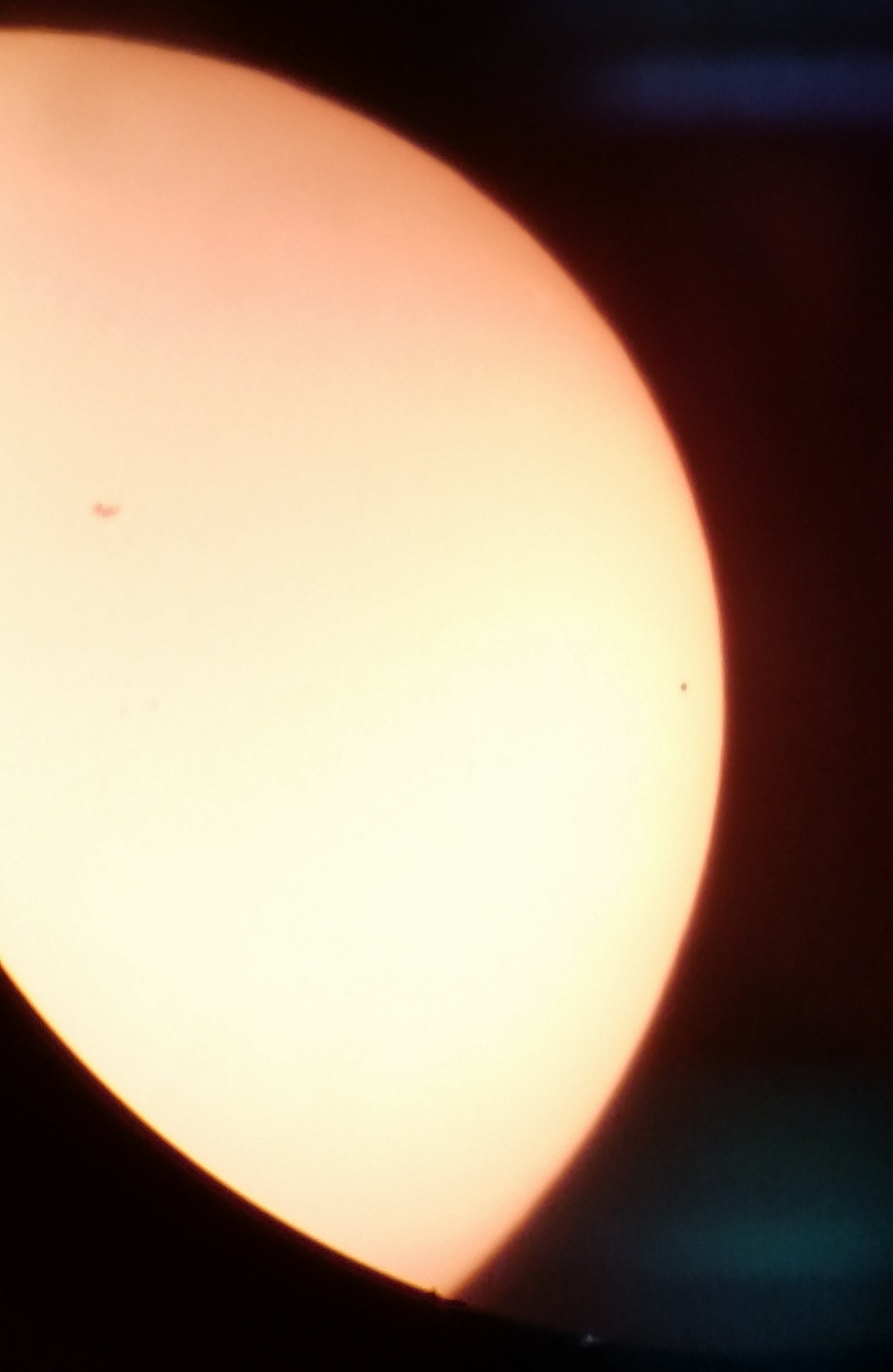9 May 2016
Our observations of the transit from near Cambridge

Tools included: a Meade ETX125 telescope (with a sun filter!); the blue cardboard Lightline Solar Projector originally bought for observing the 1999 total eclipse; and a Canon EOS 20D SLR camera with a 100-400mm zoom lens (at around the 350mm setting) (and a sun filter!), shown in use. The water butt and hose pipe were not essential for this project.
Although we (just) saw the transit with the Solar Projector, we got no good photographs that way. Below
are some of the better photographs; the actual viewing with Mark One Eyeball (through the relevant devices)
was much more spectacular. Mercury was obvious a disc, and very black compared to the sunspot. And
there was lots of great structure in the big sunspot, too. Observing for real is qualitatively
different from watching it on TV.
12:29:33 BST. Unretouched photo, taken using a Galaxy S5 smart phone camera,
through the 26mm eyepiece of the telescope (with a sun filter!). Mercury is
the small dot on the far right; the splotch is a sunspot. (The picture is "upside down"
because telescope). This snap worked: all subsequent ones are much too over-exposed and nothing can be seen.
13:04:51 BST. Digital noise removal, but no other manipulation;
photos taken with the SLR camera and 350mm lens, ISO1600, f/5.6, 1/3200sec exposure
(through a sun filter!). Mercury is the small dot on the far left. (The
picture is the right way up, because camera).
15:05:31 BST. Digital noise removal, but no other manipulation;
photos taken with the SLR camera and 340mm lens, ISO 100, f/5.6, 1/1000sec exposure
(through a sun filter!). Mercury is the small dot on the mid left.
We were very careful with the sun filters on the optics. However, I think this may be the first time I’ve got sunburnt while observing!
(The page title is a variation of the title of our Venus transit page.)
